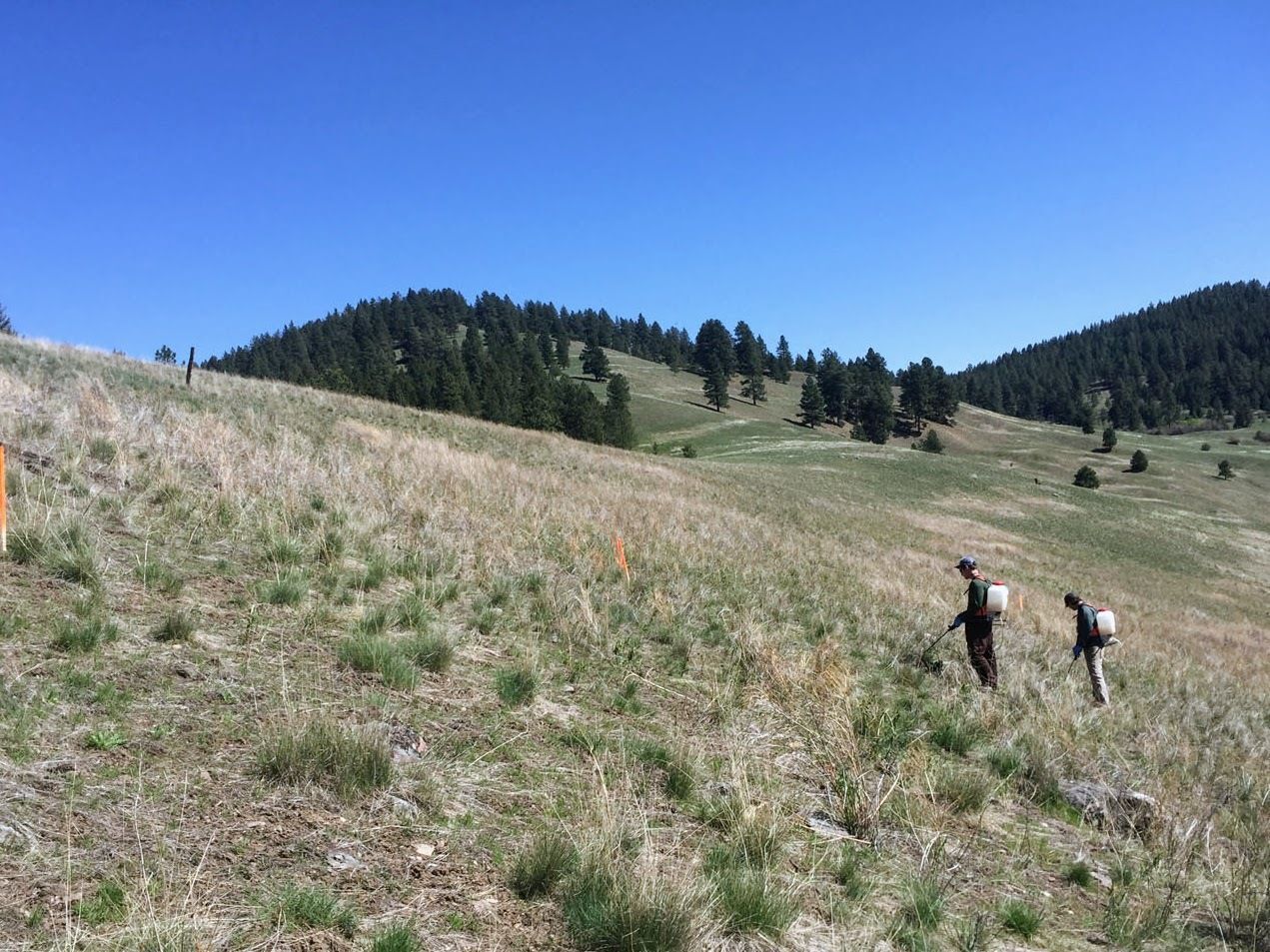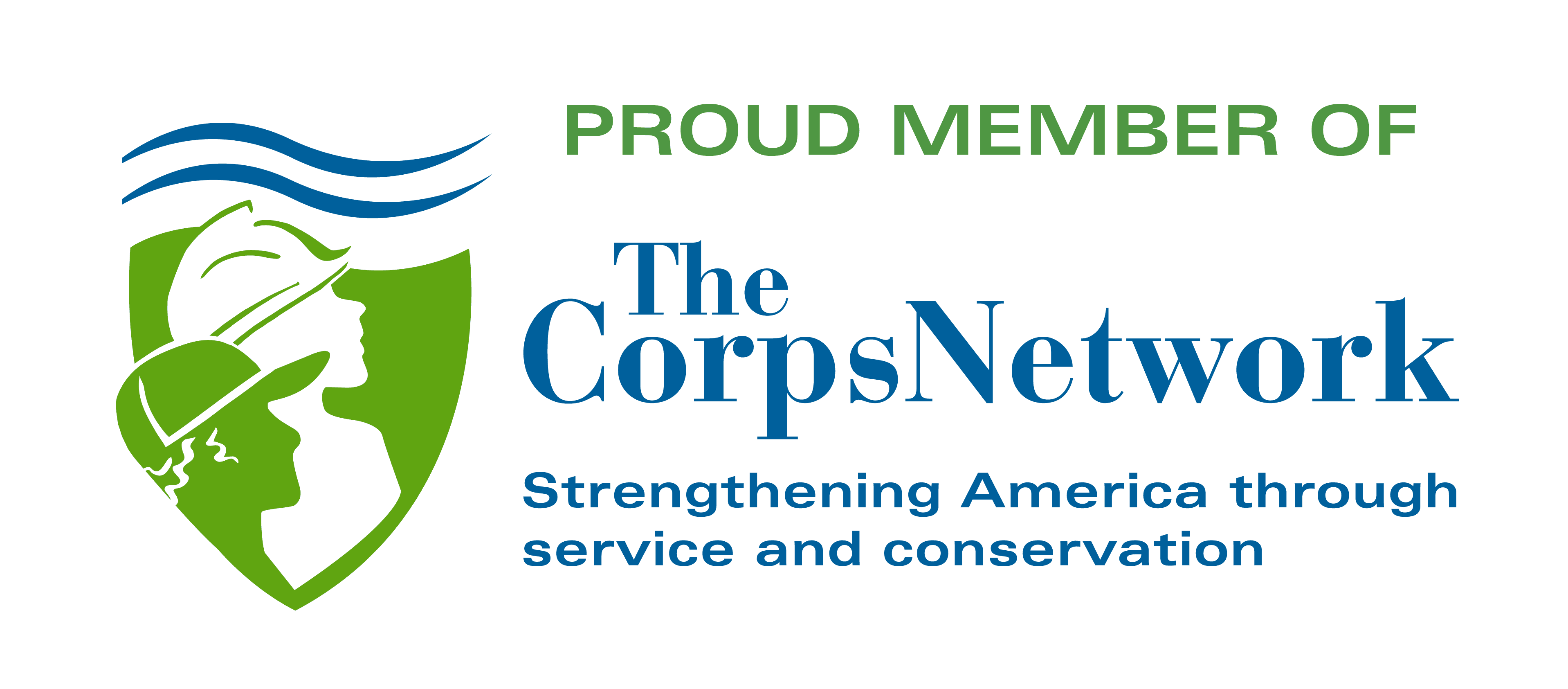
Traversing the gold and green hillside above Missoula, you can almost see the footsteps of countless MCC crew leaders before you. With backpack sprayers and hand tools in tow, these hillsides have served as training grounds to learn the proper techniques to combat invasive weeds. Crew leaders gain the skills needed to go on to lead their own weed crews, all while continuing to chip away at the noxious weeds that have squeezed out native plant populations and impacted the local elk herd.
For over 9 years, MCC has returned to spray weeds in this area that straddles National Wildlife Federation conservation lands and the adjoining Lolo National Forest lands in Sawmill Gulch and Strawberry Ridge. “I love using this as a training site. When we get leaders out there every year, we actually see the impacts and success. Especially with weed removal and herbicides, you don’t often get to see the results in a single season. It really gets people engaged and inspired,” said MCC’s Wildland Restoration Team (WRT) Field Coordinator Todd Harrell.
Not only is it an excellent learning opportunity, but it’s also an important winter habitat for the North Hills-Evaro elk herd. “They move through to the Flathead and stop in this area to feed over the winter,” Todd said. Back in 2005, a neighbor named Bert Lindler noticed that elk had begun migrating down into private properties where they’d get into the trash, eat things they shouldn’t, and bother livestock. They were running out of food sources as the invasive weeds reduced their supply of native grasses. They also further spread invasive weeds through burs that stuck to their fur.
Bert saw the problem worsening and took action. “I organized a meeting of landowners, homeowners, and managers to consider the challenges of a large and expanding elk herd that wintered on the National Wildlife Federation lands, adjoining national forest, and nearby ranches.” Over the past two decades, he has personally invested thousands of hours towards improving this habitat with the help of the National Wildlife Federation, the Lolo National Forest, MCC, and many volunteers. The work has been funded by the Missoula Conservation District, the Missoula County Weed District, Citizens for a Weed-Free Future, the Rocky Mountain Elk Foundation, and the Montana Department of Fish, Wildlife and Parks Wildlife Habitat Improvement Program. “I think we’ve largely succeeded!” Bert says with pride.
Over time, they’ve nearly eradicated the invasive weed, houndstongue. Todd echoes Bert’s feeling of accomplishment, “When I first started working on this project in 2017, we went into Sawmill Gulch and removed 40-50 giant trash bags of houndstongue,” Todd said, “Now, we only find 10-20 plants per year.” Bert added, “We've beat houndstongue in the area using the combination of hand pulling and backpack spraying. I never thought I would live to see the end of houndtongue's presence as a serious weed (rather than just an occasional plant found on the landscape), but it appears that I will!”
But the battle isn’t over. For the past three years, MCC’s WRT crews have shifted their sights to Dalmatian toadflax and knapweed. As they’ve covered about 30 acres a year, they’ve managed to completely stop the toadflax from spreading and are monitoring the control of knapweed. “It’s been really great! It’s a great partnership we have going,” Todd reflected. Strong collaborative partnerships, improving our communities, and restoring our public lands are what we’re all about here at MCC. What started as crew leaders in backpack sprayers dotting the hillsides is transforming into a healthy habitat for years to come.

![[Image Description: Two MCC members are walking away on a rocky trail, carrying their packs, surrounded by burnt orange bushes. Through the haze in the background, there are a multitude of mountains, overlapping one another.]](https://cdn.firespring.com/images/7ba12407-5e3a-41c1-b4b4-f00aac9d37a1.jpg)




